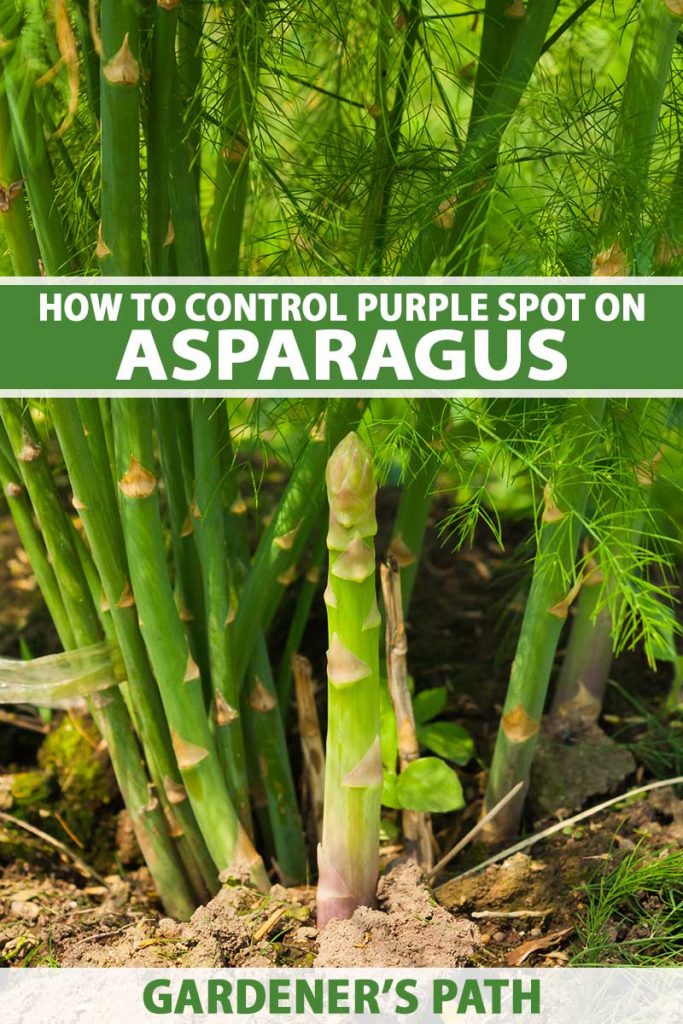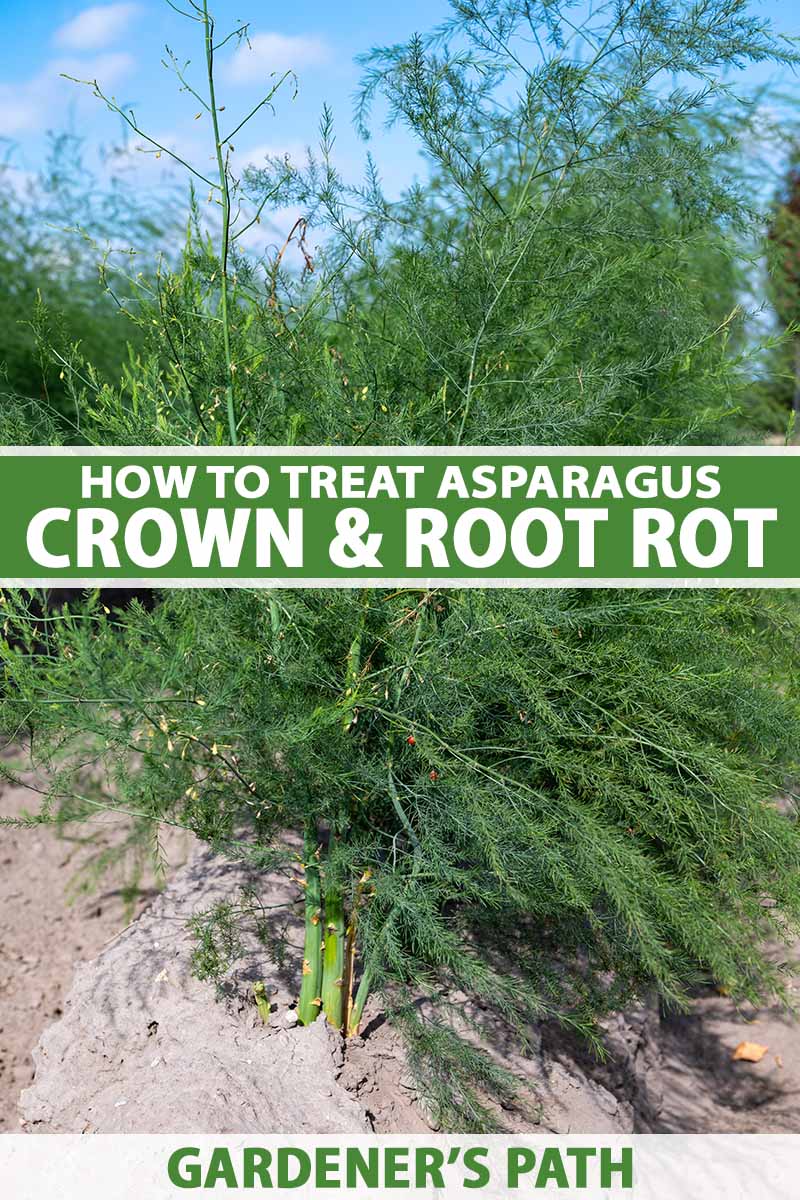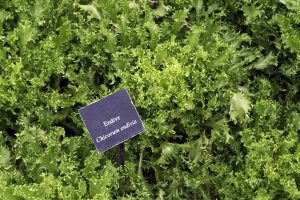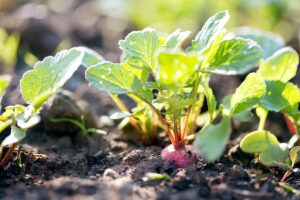Fusarium and Phytophthora crown and root rot can devastate asparagus plots and cause a total loss of yields. There are steps you can take to minimize the stress to your plants and enhance their chances of survival. Learn how to identify and treat these diseases with our guide.
We link to vendors to help you find relevant products. If you buy from one of our links, we may earn a commission.
Asparagus growers have been aware of Fusarium crown and root rot since at least 1908, and things have not improved much since then.
This disease can shorten the lifespan of your crop by 50 percent even when you implement good cultural practices.
In fact, many 20th century asparagus growers on the East Coast were forced to abandon it as a crop because of this disease.
Fusarium oxysporum f. sp. asparagi and F. proliferatum produce spores that last for decades and are ubiquitous in the soil.
Their omnipresence means that as soon as some factor stresses your crop, it can become vulnerable to crown and root rot.
And as if this horrific disease is not bad enough, a third pathogen can cause crown and root rot on asparagus – the water mold Phytophthora asparagi.
In addition to attacking the crowns and roots, this organism can also infect the spears.
In this article, we will cover what you can do to protect your plants from these diseases.
What You’ll Learn
Effects of the Three Pathogens
Fusarium oxysporum f. sp. asparagi causes a wilt of the plant’s vascular system. This fungus produces resting spores called chlamydospores that can remain dormant in the soil for up to 30 years.
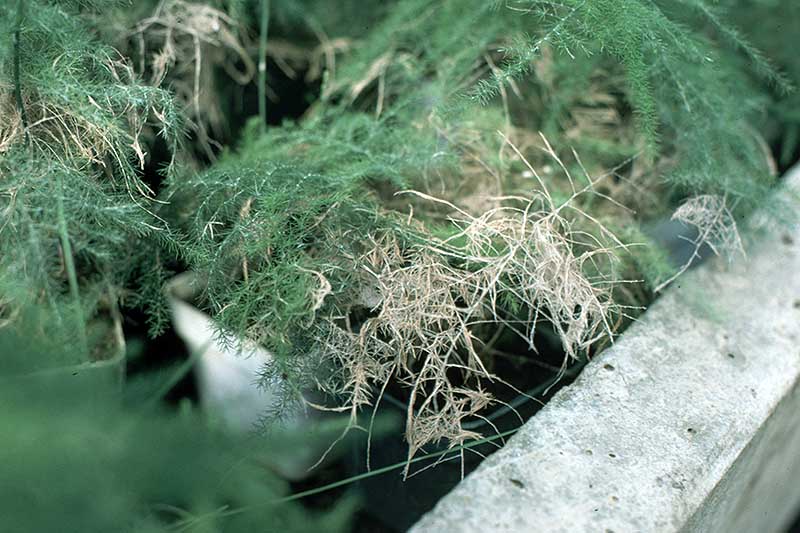
These chlamydospores have been found on root debris in plots in which asparagus had not been grown for 15 years!
F. oxysporum f. sp. asparagi typically affects plants in more temperate climates, while F. proliferatum primarily causes root rot and is more active in hotter regions.
Both fungi enter the plants through the tips of the roots and then produce spores called microconidia that are transported through the plants along with fluids, spreading fungus as they go.
Phytophthora asparagi spreads by two types of spores. Oospores lurk in the soil for long periods until they sense the presence of a host and germinate, infecting the asparagus roots and crowns.
When the plants are infected, highly mobile spores called zoospores are released. They can even swim in water and are easily splashed onto the spears where they can cause infection.
Symptoms
Several classic symptoms indicate this disease is present:
- Reddish-colored lesions are apparent on the roots, lower stems, and/or crowns.
- The ferns of infected plants turn yellow.
- Seedlings are killed by damping off.
The lesions will cause the fleshy roots to rot and die. When an infection is advanced, the fleshy part of the roots will disappear entirely, leaving only a shell behind.
Since Fusarium infections cannot be treated with fungicides, it is important to distinguish between a Fusarium infection in the crown and one due to Phytophthora, which can be treated with fungicides.
If the rot is due to Fusarium, the tissue in the crown usually remains dry. In contrast, if the rot is caused by Phytophthora, the affected tissue tends to be wet.
Factors that Favor Infection
Any stress factor, including drought and weeds, will increase the incidence of Fusarium and its severity.
Even though asparagus is drought tolerant, small deficits in moisture can cause dramatic increases in the likelihood of infection if pathogens are present.
Even harvesting the spears can stress the plants, so experts advise against waiting to harvest until late in the season. In addition, the disease will cause the spears to shrink over the course of the season, lowering their quality.
Phytophthora crown and root rot is more likely to occur in fields with depressions that stay wet longer.
Managing Fusarium Crown and Root Rot
These fungi are not controllable by fungicides, and there is no direct way to manage them.
However, there are some indirect methods that can help prevent infection.
Keep Soil pH High
The fungi are much less likely to cause infection in mildly acidic to neutral soil, so conduct a soil test and amend as needed to keep the pH of your soil at or above 6.0.
Irrigation
Plants are much less likely to be stressed and prone to disease if they are watered adequately, so be sure to keep your crop well irrigated.
Control Weeds and Insects
Weeds are often a serious problem in asparagus patches, and they should be pulled by hand regularly during the spring and early summer. Be careful to cultivate lightly, so you don’t damage the emerging spears.
Removing weeds and controlling insects will help a great deal to relieve stress on the plants and make them less likely to contract this disease.
Incorporate Salt
An outmoded technique from the pre-herbicide era is to broadcast sodium chloride onto older fields that are declining.
After this practice was discontinued by farmers and in home gardens in the 1950s and 60s because of concerns about high saline levels in the soil, there was a dramatic increase in the reported number of cases of Fusarium crown and root rot.
Research by the plant pathologist Wade H. Elmer published in 1992 found that amending with between six and 12 ounces of sodium chloride per square foot of land boosted vigor, slowed the rate of decline, and could allow growers to recoup some of their losses.
However, this practice has not been re-implemented on a large scale due to concerns about salt damage and environmental issues. Proceed with caution.
Practices to Avoid
Do not rotate to corn, and avoid planting asparagus again anywhere that had these plants growing on it for at least four years.
Do not till deeply to avoid damaging the crown and roots of your asparagus plants.
Spears emerge and reach their peak at different times. Stop harvesting your asparagus six to eight weeks after their initial maturation date.
Managing Phytophthora Crown and Root Rot
Preventive measures that you can take against this disease include not planting in fields that drain poorly or are low-lying.
Fungicides are an option that should be implemented at the first sign of disease.

Fosetyl-Al can be used as a drench or foliar spray during the growing season. It is available for purchase from ITS Supply on Amazon.
Cultural Methods May Help Your Crop Survive
Since the pathogens that attack the crowns and roots of asparagus plants are ubiquitous in the soil, you cannot easily avoid them.

However, by carefully tending your plants to prevent undue stress, you may be able to produce a good crop in spite of the presence of these fungi and water molds.
Have you battled crown and root rot in your asparagus patch? If so, let us know in the comments!
And for more information about growing asparagus in your garden, have a look at these guides next:
- How to Identify and Control Common Asparagus Diseases
- How to Plant and Grow Asparagus
- What Is Asparagus Rust?
- What Is Purple Spot of Asparagus?
© Ask the Experts, LLC. ALL RIGHTS RESERVED. See our TOS for more details. Product photo via ITS. Uncredited photos: Shutterstock. With additional writing and editing by Allison Sidhu.
